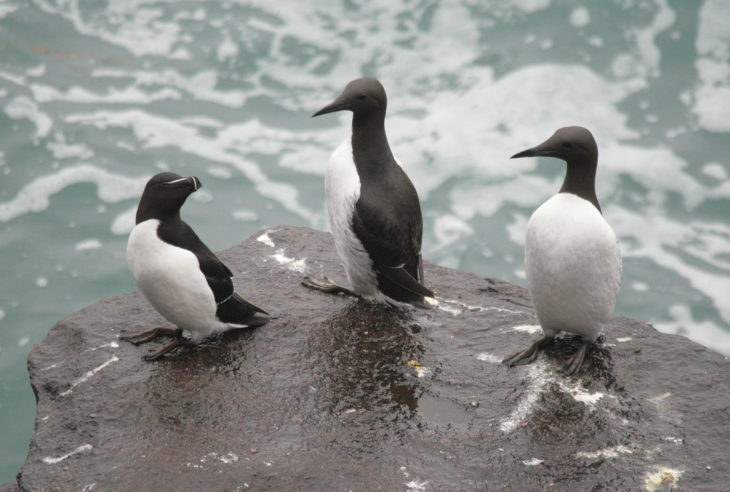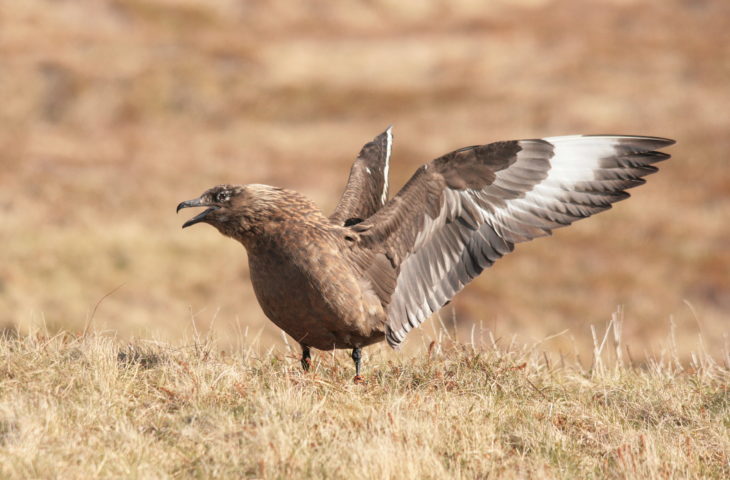Good year for kittiwakes and bonxies on Handa
It’s well known that seabird numbers are in decline nationally and globally, with good news stories becoming less frequent as climate change impacts the availability of the food on which they are dependant. That’s why the team on Handa Island Wildlife Reserve are particularly delighted to report an increase in numbers of kittiwakes and great skuas (AKA bonxies) this year.
Handa Island is owned by Scourie Estate and managed on their behalf by a Scottish Wildlife Trust team consisting of staff and volunteers. A small ferry running from Tarbet brings visitors over to the island every day through the summer months, enabling them to experience one of Scotland’s most spectacular seabird colonies.
These seabirds include small numbers of puffins as well as many thousands of guillemots, razorbills, fulmars and kittiwakes. Handa was once the largest guillemot colony in the UK with 113,000 birds recorded in 1994, but a decline of more than 50% since then has seen the population drop to only 54,000 in 2016. This downward trend is all too common in British seabird colonies, but not all birds are faring so badly.

The all-island kittiwake count was completed this month, with 3749 nests recorded. As the last count reported an alarming decline from 4466 in 2009 to 2715 in 2013, this year’s count suggests that the kittiwake population is undergoing something of a recovery.
This was refreshing news for me, having spent four seasons on Noss National Nature Reserve in Shetland experiencing what can only be described as a population crash for this species. Productivity monitoring is conducted each year throughout the breeding season for kittiwakes. More consistent rates of breeding success will contribute to the stabilisation of the island’s population in the future.
The Handa Skua Project has been running since 2003 and principally aims to monitor the breeding success of great and Arctic skuas within a colony in the southern end of both species’ global range. While small numbers of Arctic skuas breed on Handa (17 nests counted in 2017), the island is home to a significant colony of bonxies, with the northern and western Scottish islands supporting almost half of the global population for this species. Dr Trevor Jones initiated the project 15 years ago so the ranger team were delighted to welcome him and his partner Jo back this year all the way from their home in Tanzania to assist with the all-island skua count.
The count was completed over 3 long days walking transects through the most inaccessible terrain on the island, eventually recording at least 283 apparently occupied territories (AOTs). A few more could yet be added to this total, but it already represents a record number with the previous highest count in 2009 of 266 AOTs.

Seabird productivity is directly connected to the condition of the world’s oceans, so it’s vital that we monitor their success in order to understand and protect the habitat that supports them. We should all be aware of the impact that climate change has on the world around us, and consider the importance of our oceans both to us, and our coastal seabird populations.
Craig Nisbet, Handa Ranger
Help protect Scotland’s wildlife
Our work to save Scotland’s wildlife is made possible thanks to the generosity of our members and supporters.
Join today from just £3 a month to help protect the species you love.
Preface
It’s well known that seabird numbers are in decline nationally and globally, with good news stories becoming less frequent as climate change impacts the availability of the food on which …
